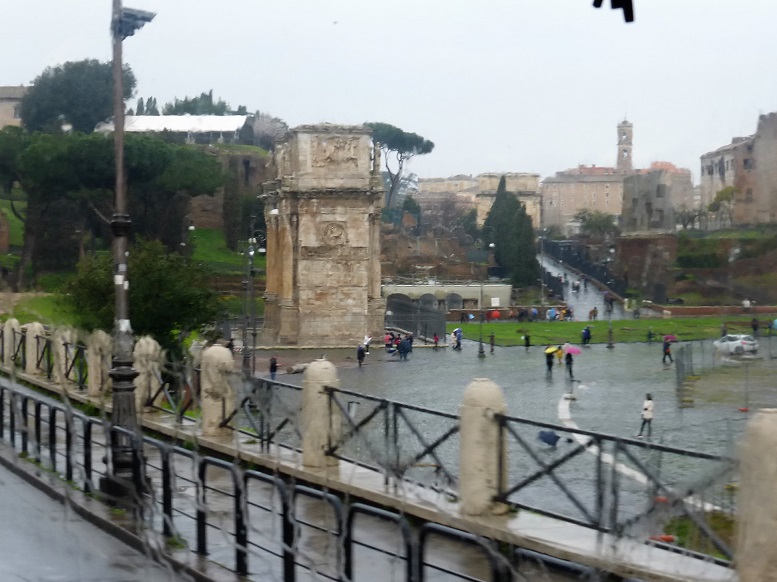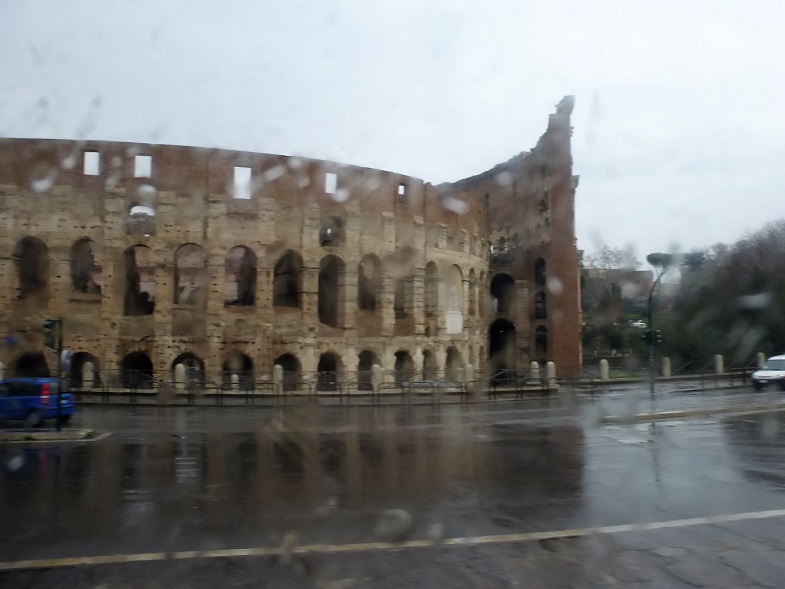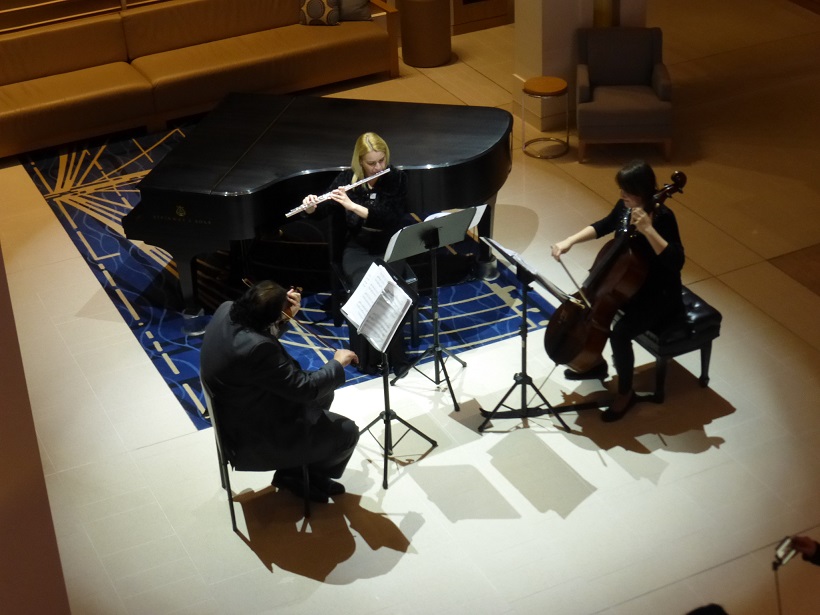I am slowly going around the Mediterranean to visit many countries along the coast. So far I have been to Italy, Greece, Turkey, Egypt and Morocco. With this trip I will visit Algeria and Spain. I did spend two weeks in northern Italy years ago in 1984!
Many of the places I have visited are indicated on this map of the world. I am amazed at how many countries and places I have been lucky enough to visit! As you can see, there are two places I haven't visited and the map has two bare spots on it, India and the land north of it and Austrailia!
Virginia called me to talk about our trips to Ireland, Jamaica, Indonesia and Singapore and we decided we both wanted to go on a southern Mediterannean Viking Cruise and see the various countries and islands such as Italy, Sicily, Sardinia, Algeria, and Spain. Plus I get to celebrate my 78th birthday in Sicily of all places!
Ireland
|
Jamaica
|
Indonesia
|
Singapore
|
Sicily
|
|
My Personal Travel Agent - Setting up trips to Portugal and many other destinations. A top Travel Consultant.
|
|
 |
Departure Lounge Travel Agency
| Viviane Tondeur MBA, CTC, DS
|

|
|
| vtondeur@departurelounge.com
|
818-268-6552
|
|
*** Check out the web site at Travel Planning by Viviane for the latest updates on traveling. ***
This link will display an overview of the itinerary and information on the Viking Star cruise ship we are sailing on the Mediterranean Sea. (This appears on a separate page.)
|
Legend says Rome was founded by Romulus in 713 B.C.E, but the origins probably predate this, from a time when the settlement was one of many on the Latium Plain. Rome developed where a salt trade route crossed the river Tiber en route to the coast, near the seven hills the city is said to be built on. It’s traditionally believed that the early rulers of Rome were kings, possibly coming from a people known as the Etruscans, who were driven out by 500 B.C.E.
The Roman Republic and Empire
The kings were replaced with a republic which lasted for five centuries and saw Roman dominion expand across the surrounding Mediterranean. Rome was the hub of this empire, and its rulers became Emperors after the reign of Augustus, who died in 14 C.E. Expansion continued until Rome ruled much of western and southern Europe, north Africa, and parts of the Middle East. As such, Rome became the focal point of a rich and opulent culture where vast sums were spent on buildings. The city swelled to contain perhaps a million people who were dependent on grain imports and aqueducts for water. This period ensured Rome would feature in the retelling of history for millennia. Read More........ |
|
A History of Italy and a Map of the Itinerary
|
|
The history of Italy begins with the arrival of the first hominins 850,000 years ago at Monte
 Poggiolo. Italy shows evidence of habitation by anatomically modern humans beginning about 43,000 years ago. It is reached by the Neolithic as early as 6000–5500 BC Cardium Pottery and Impressed ware.
Poggiolo. Italy shows evidence of habitation by anatomically modern humans beginning about 43,000 years ago. It is reached by the Neolithic as early as 6000–5500 BC Cardium Pottery and Impressed ware.
The Italian Bronze Age begins around 1500 BC, likely corresponding to the arrival of Indo-European speakers whose descendants would become the Italic peoples of the Iron Age; alongside the early Italic cultures, however, the Etruscan civilization in central Italy, Celts in northern Italy and Greek colonies in the south flourished during 8th to 5th centuries BC.
Among the Italic peoples, the Latins, originally situated in the Latium region, and their Latin language would come to dominate the peninsula with the Roman conquest of Italy in the 3rd century BC. The Roman Republic and later the Roman Empire dominated Italy for many centuries, and furthermore established the culture and civilization of Western Europe in general, including the adoption and subsequent spread of Christianity as state religion at the end of the 4th century.
Read More........ |
|
Depart San Francisco, CA (SFO) - Arrive in Rome Italy (FCO)
|

Chuck's Apartment and View.
Our first day was getting on the ship and checking out our cabin and stashing our gear. We then went around the ship to check out the layout and then had our first dinner on the ship.
First Champagne as we entered our cabin.
|
Checking out our room information.
|
Wine and Dinner under the stars by the pool.
|
|
Day 2 - Tour of Rome
|
Evening Sail to Sicily
|
The second day we did the tour of Rome before sailing to Sicily and Sardinia, all part of Italy.
Relax and take in the sights of Rome, admiring historic monuments and glorious architecture on a leisurely drive. We will travel along some of the city’s most scenic routes. See ancient Roman sites including Capitoline Hill and the Aurelian Walls, Baths of Caracalla, Pyramid of Cestius, Colosseum and Circus Maximus. Admire the Arch of Constantine, the best triumphal arch in the city, built in 315 AD to celebrate Constantine’s victory at the battle of the Milvian Bridge. Drive along the elegant Via Veneto, enjoying views of Villa Borghese Park. At Piazza Repubblica, admire the Basilica di Santa Maria Maggiore and the Fountain of the Naiads. Driving along the Tiber River, see the Great Synagogue of Rome and Tiber Island. Make a photo stop at the Circus Maximus and enjoy some free time in the Vatican area. As you depart Rome, the great facade of St. Peter’s Basilica will come into view. Return to your ship for lunch on board.
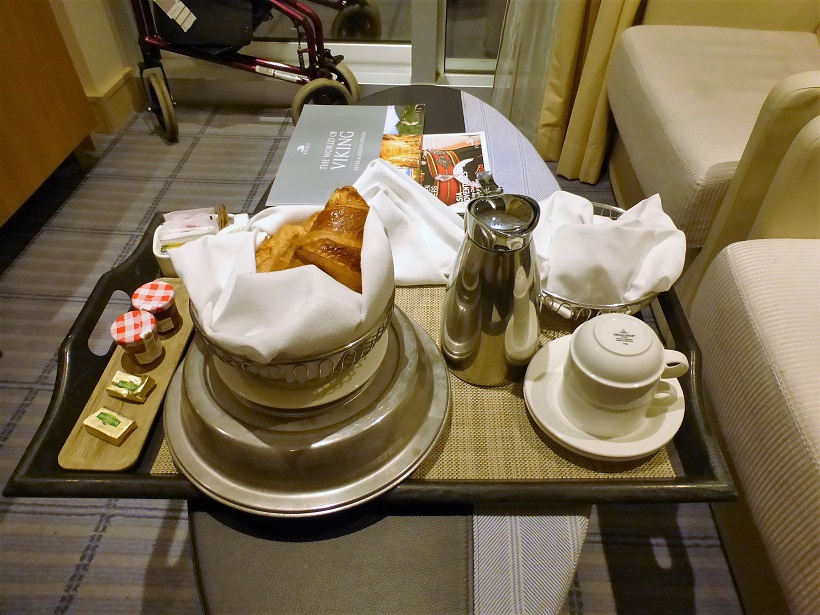 |
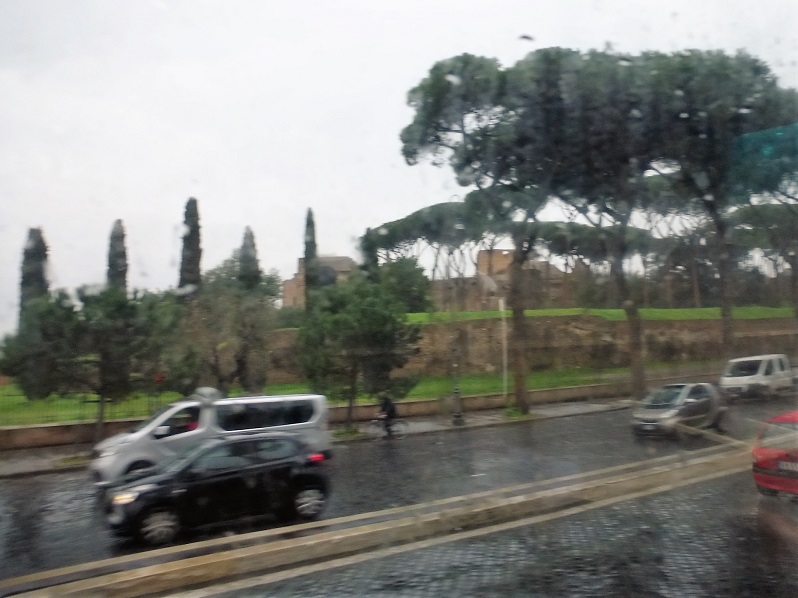 |
|
Room Service was a delight.
|
Breakfast before the wind and rain as we left the ship.
|
|
Roman Forum, no buses can stop now, walking in only.
|
No stops close to the Colosseum, it was raining anyway!
|
The Colosseum or Coliseum, also known as the Flavian Amphitheatre (Latin: Amphitheatrum Flavium; Italian: Anfiteatro Flavio), is an oval amphitheatre in the centre of the city of Rome, Italy. Built of travertine, tuff, and brick-faced concrete,[1] it is the largest amphitheatre ever built. The Colosseum is situated just east of the Roman Forum. Construction began under the emperor Vespasian in AD 72, and was completed in AD 80 under his successor and heir Titus. Further modifications were made during the reign of Domitian (81–96). These three emperors are known as the Flavian dynasty, and the amphitheatre was named in Latin for its association with their family name (Flavius).
The Colosseum could hold, it is estimated, between 50,000 and 80,000 spectators, having an average audience of some 65,000; it was used for gladiatorial contests and public spectacles such as mock sea battles (for only a short time as the hypogeum was soon filled in with mechanisms to support the other activities), animal hunts, executions, re-enactments of famous battles, and dramas based on Classical mythology. The building ceased to be used for entertainment in the early medieval era. It was later reused for such purposes as housing, workshops, quarters for a religious order, a fortress, a quarry, and a Christian shrine.
Although partially ruined because of damage caused by earthquakes and stone-robbers, the Colosseum is still an iconic symbol of Imperial Rome. It is one of Rome's most popular tourist attractions and also has links to the Roman Catholic Church, as each Good Friday the Pope leads a torchlit "Way of the Cross" procession that starts in the area around the Colosseum.
|
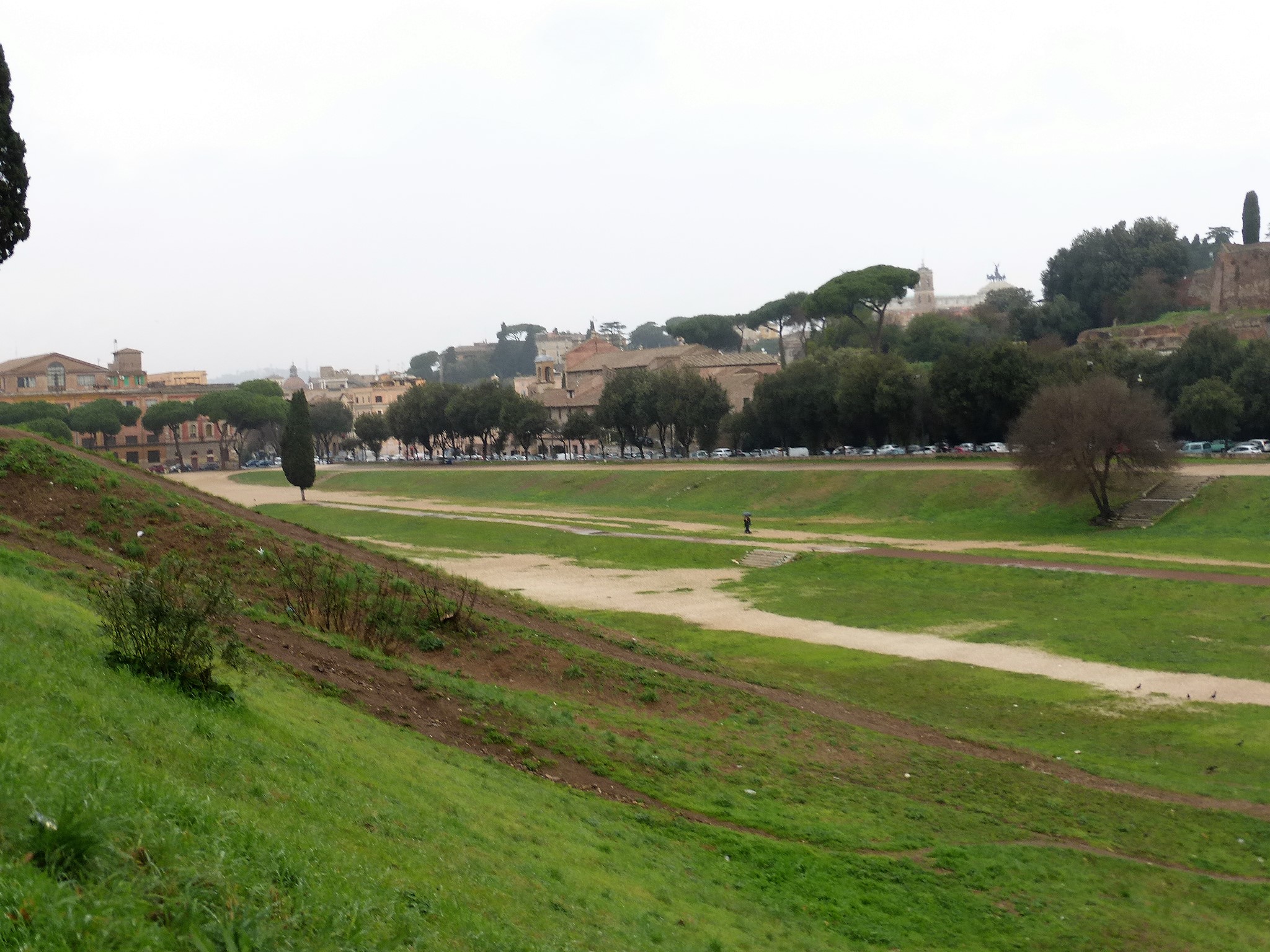 |
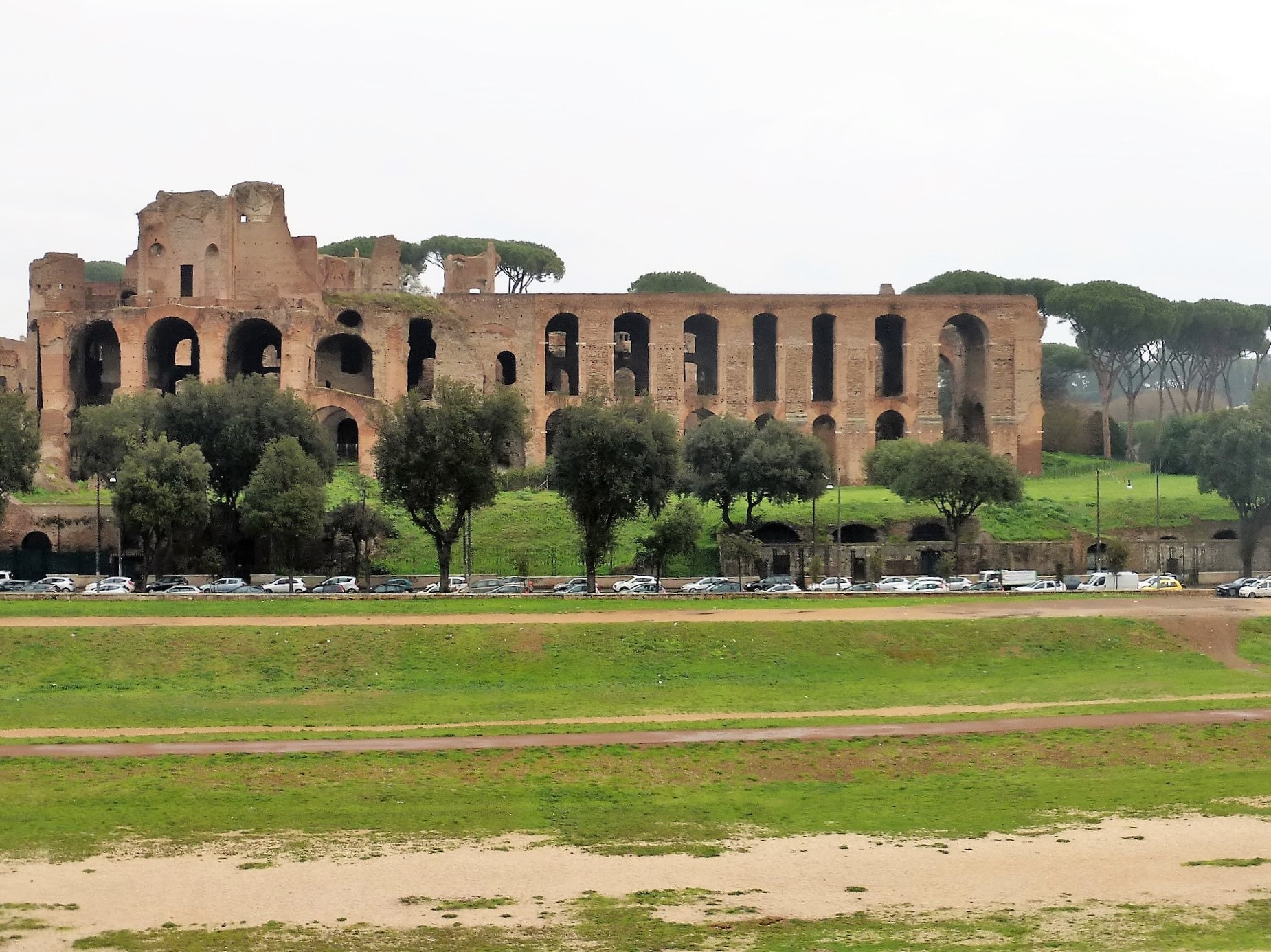 |
The Circus Maximus (Latin for greatest or largest circus, in Italian Circo Massimo) is an ancient Roman chariot racing stadium and mass entertainment venue located in Rome, Italy. Situated in the valley between the Aventine and Palatine hills, it was the first and largest stadium in ancient Rome and its later Empire. It measured 621 m (2,037 ft) in length and 118 m (387 ft) in width and could accommodate over 150,000 spectators. In its fully developed form, it became the model for circuses throughout the Roman Empire. The site is now a public park. Across from where I was standing is the remains of the Caesar's palaces.
|
|
They start to build something and stop due to finding ruins.
|
Beautiful churches and museums.
|
 |
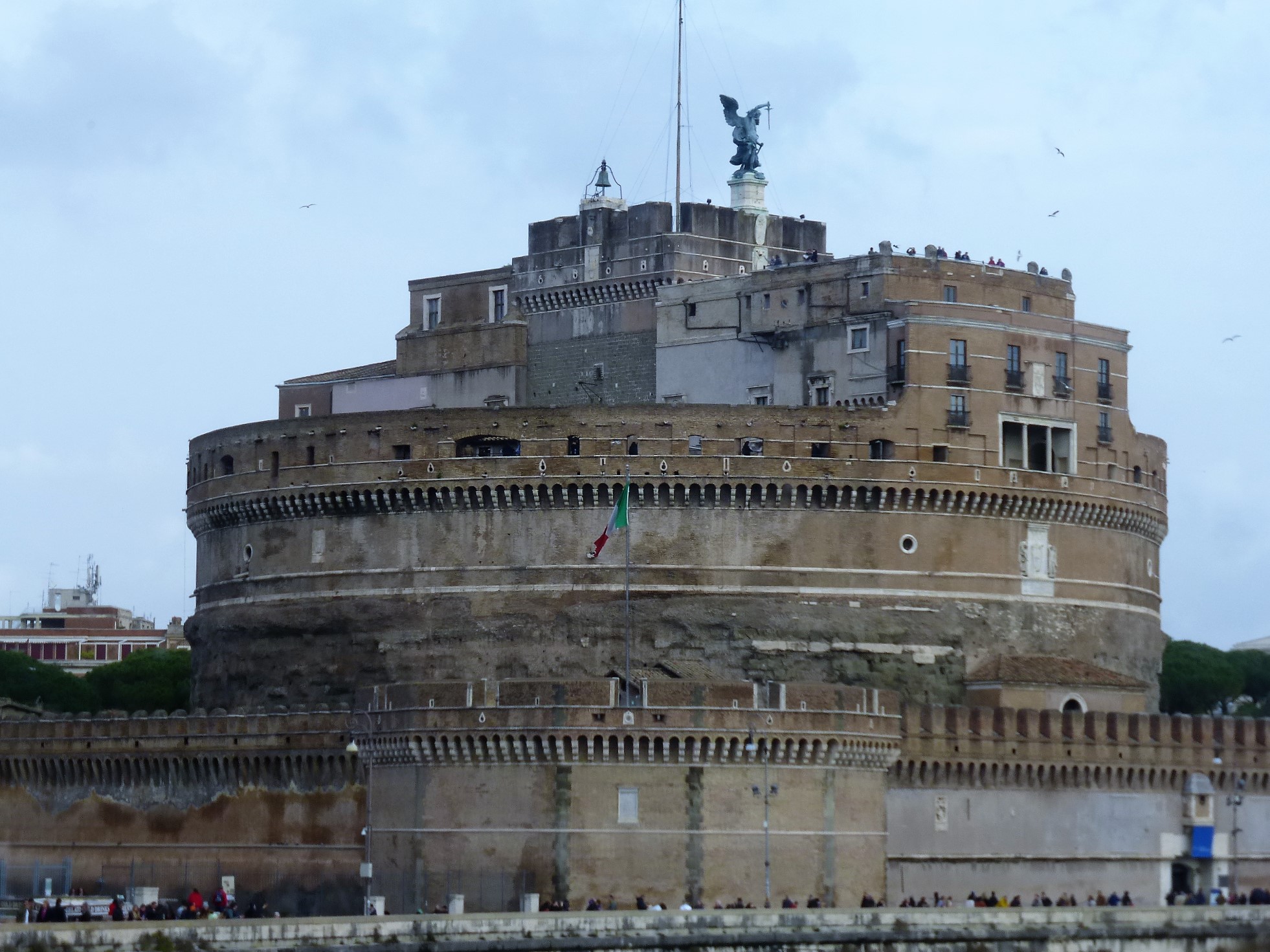 |
The Mausoleum of Hadrian, usually known as Castel Sant'Angelo; English: Castle of the Holy Angel), is a towering cylindrical building in Parco Adriano, Rome, Italy. It was initially commissioned by the Roman Emperor Hadrian as a mausoleum for himself and his family. The building was later used by the popes as a fortress and castle, and is now a museum. The Castle was once the tallest building in Rome.
The tomb of the Roman emperor Hadrian, also called Hadrian's mole, was erected on the right bank of the Tiber, between 134 and 139 AD. Originally the mausoleum was a decorated cylinder, with a garden top and golden quadriga. Hadrian's ashes were placed here a year after his death in Baiae in 138, together with those of his wife Sabina, and his first adopted son, Lucius Aelius, who also died in 138. Following this, the remains of succeeding emperors were also placed here, the last recorded deposition being Caracalla in 217. The urns containing these ashes were probably placed in what is now known as the Treasury room deep within the building. Hadrian also built the Pons Aelius facing straight onto the mausoleum – it still provides a scenic approach from the center of Rome and the left bank of the Tiber, and is renowned for the Baroque additions of statues of angels holding aloft instruments of the Passion of Christ.
|
 |
The Papal Basilica of St. Peter in the Vatican (Italian: Basilica Papale di San Pietro in Vaticano), or simply St. Peter's Basilica (Latin: Basilica Sancti Petri), is an Italian Renaissance church in Vatican City, the papal enclave within the city of Rome.
Designed principally by Donato Bramante, Michelangelo, Carlo Maderno and Gian Lorenzo Bernini, St. Peter's is the most renowned work of Renaissance architecture and the largest church in the world.[3] While it is neither the mother church of the Catholic Church nor the cathedral of the Diocese of Rome, St. Peter's is regarded as one of the holiest Catholic shrines. It has been described as "holding a unique position in the Christian world" and as "the greatest of all churches of Christendom".
Cath olic tradition holds that the Basilica is the burial site of Saint Peter, chief among Jesus's Apostles and also the first Bishop of Rome. Saint Peter's tomb is supposedly directly below the high altar of the Basilica. For this reason, many Popes have been interred at St. Peter's since the Early Christian period, and there has been a church on this site since the time of the Roman emperor Constantine the Great. Construction of the present basilica, which would replace Old St. Peter's Basilica from the 4th century AD, began on 18 April 1506 and was completed on 18 November 1626.
|
 |
 |
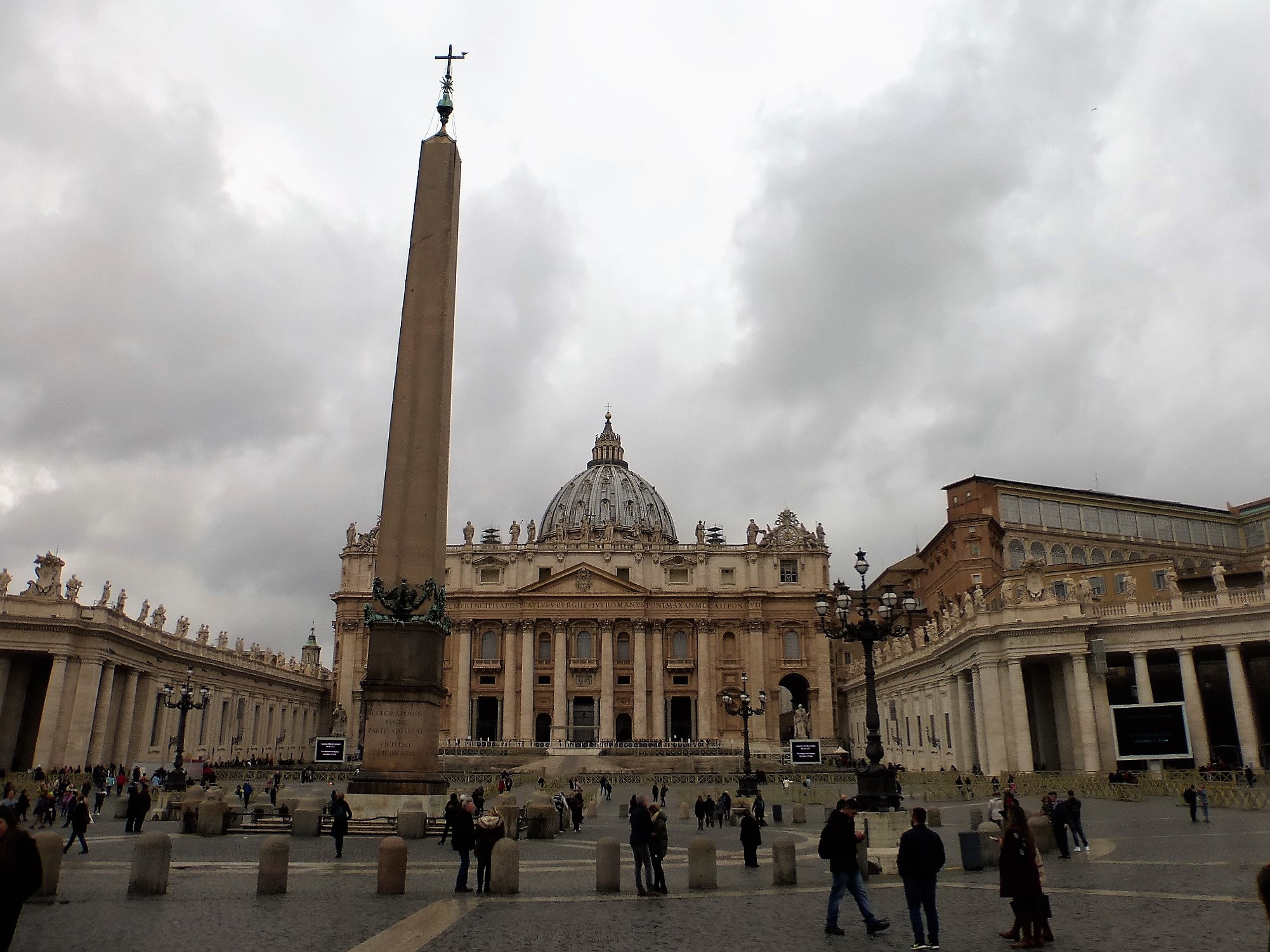 |
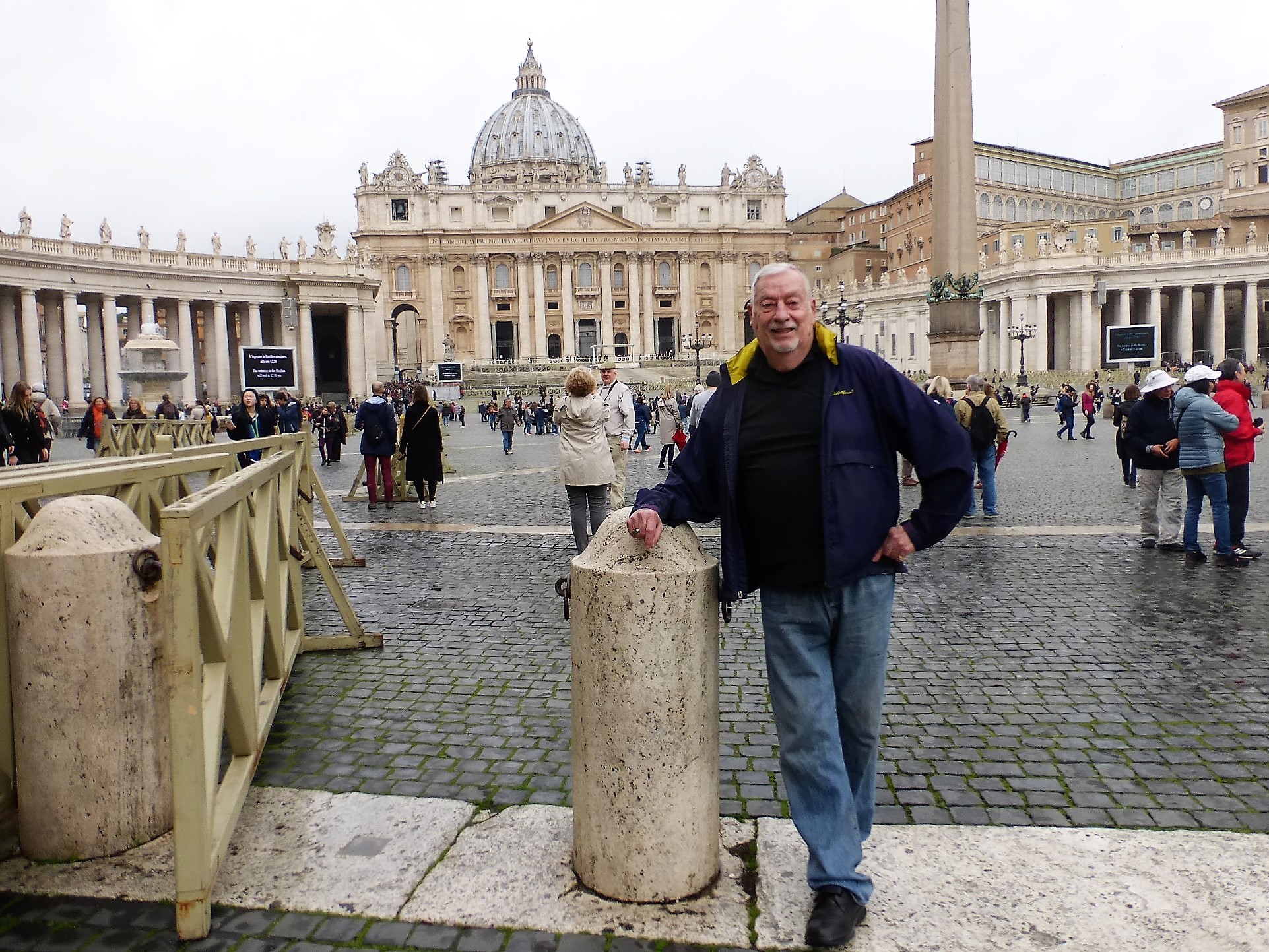 |
 |
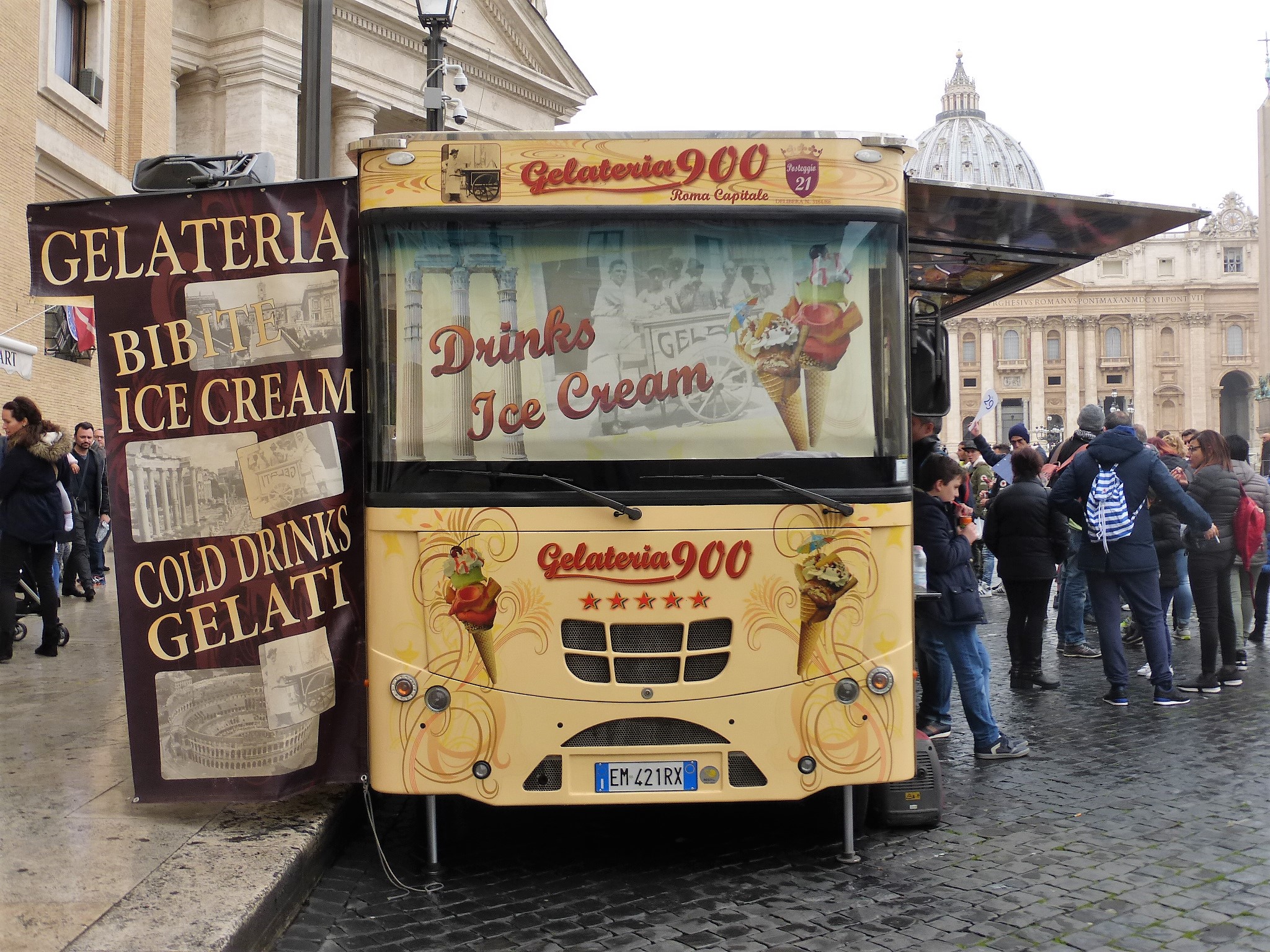 |
 |
 |
|
The large atrium.
|
Dinner after the Rome tour.
|
|
Chamber music, guitar and piano music each night.
|
Cocktails before and after dinner!
|
Charles Walter Buntjer
San Francisco California
|

|
Created on: 2017.07.01
Updated on: 2018.02.13
|
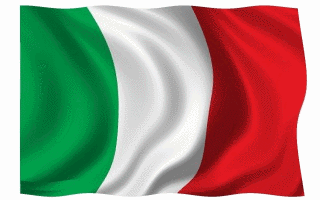







 Poggiolo. Italy shows evidence of habitation by anatomically modern humans beginning about 43,000 years ago. It is reached by the Neolithic as early as 6000–5500 BC Cardium Pottery and Impressed ware.
Poggiolo. Italy shows evidence of habitation by anatomically modern humans beginning about 43,000 years ago. It is reached by the Neolithic as early as 6000–5500 BC Cardium Pottery and Impressed ware.






